Sorry, nothing in cart.
Gabapentin 100 mg
In Stock
Available Options
| pack size | Price | Quantity | |
|---|---|---|---|
| 100 Capsules | $65.00 | ||
| 200 Capsules | $105.00 | ||
| 300 Capsules | $149.00 | ||
| 500 Capsules | $220.00 |
Quick Overview
| Brand Name: | Gabapentin 100 |
| Generic Name: | Gabapentin |
| Active Ingredient: | Gabapentin |
| Manufacturer: | Healing Pharma |
| Drug Class: | Anticonvulsant |
| Strength: | 100 mg |
| SKU: | GBPNT100 |
| Packaging: | 10 tablets in 1 Strip |
| Treatment: | Neuropathic Pain |
| Time Duration: | 30 to 60 minutes |
| Price: | $65 – $220 |
Product Description
Gabapentin 100 mg is a medication frequently prescribed for the condition, including diabetic neuropathic pain, partial seizures, shingles (postherpetic neuralgia), and restless leg syndrome (RLS). This medication belongs to a class of drugs known as anticonvulsants, which are primarily used to manage seizures but have broader applications due to their effects on nerve activity.
What is Gabapentin?
Gabapentin is an anticonvulsant medication initially developed to treat epilepsy. It is now more widely known for its effectiveness in treating neuropathic pain, a type of pain caused by nerve damage. Gabapentin is classified as a GABA analogue, meaning it shares structural similarities with gamma-aminobutyric acid (GABA), a neurotransmitter in the brain that inhibits nerve activity. However, Gabapentin does not work directly on GABA receptors but instead influences the way nerves transmit pain signals.
Uses of Gabapentin 100mg
- Neuropathic Pain: Gabapentin 100 is often prescribed to alleviate neuropathic pain, which can result from conditions such as diabetic neuropathy, postherpetic neuralgia (pain following shingles), and other nerve-related pain disorders. The 100 mg dosage is generally used as a starting dose or in cases where lower doses are sufficient for symptom management.
- Seizure Disorders: Gabapentin is used as a treatment for partial seizures, which are seizures that originate in one part of the brain. It helps to reduce the frequency of these seizures, particularly when used in combination with other antiepileptic drugs.
- Restless Legs Syndrome (RLS): Although not officially approved for this use by all regulatory bodies, Gabapentin is sometimes prescribed off-label to manage symptoms of RLS, a condition characterized by an uncontrollable urge to move the legs, often accompanied by uncomfortable sensations.
- Fibromyalgia: Gabapentin may also be used off-label to help manage fibromyalgia symptoms, a condition marked by widespread pain and tenderness in the muscles and soft tissues.
Mechanism of Action
Gabapentin 100mg exact mechanism of action is not completely understood, but it is believed to involve the modulation of voltage-gated calcium channels on nerve cells. By binding to a specific subunit of these channels, Gabapentin decreases the release of excitatory neurotransmitters involved in pain and seizure pathways. This action helps to stabilize nerve activity and reduce abnormal electrical impulses that lead to pain and seizures.
Dosage and Administration
Gabapentin 100 mg is often prescribed as a starting dose or for patients who require lower doses for managing their symptoms. The dosage can vary widely depending on the condition being treated, the patient’s response to the medication, and other individual factors.
- Neuropathic Pain: For neuropathic pain, the typical starting dose might be 100 mg taken three times daily. The dose may be gradually increased based on patient tolerance and effectiveness, with the maximum dose potentially reaching 3600 mg per day, divided into three or four doses.
- Seizures: For seizure management, the initial dose usually starts at 300 mg daily, divided into three doses. This can be adjusted based on the patient’s seizure frequency and side effects, with a maximum recommended dose of 3600 mg per day.
- Other Conditions: For conditions like Restless Legs Syndrome or fibromyalgia, the dosing may differ and is often adjusted based on clinical response.
Side Effects
Gabapentin is generally well-tolerated, but like all medications, it can cause side effects. Common side effects include:
- Drowsiness: Patients often report feeling sleepy or fatigued, which can impact daily activities and cognitive function.
- Dizziness: Dizziness and lightheadedness are relatively common, particularly when standing up quickly.
- Coordination Problems: Some individuals may experience unsteady gait or difficulty with fine motor skills.
- Weight Gain: An increase in appetite and subsequent weight gain can occur.
- Swelling: Peripheral edema or swelling in the extremities may be observed.
Less common but more severe side effects include mood changes, depression, suicidal thoughts, and severe allergic reactions. Patients should contact their healthcare provider if they experience significant mood changes, unusual behavior, or symptoms of an allergic reaction.
Related Product
Interactions
Gabapentin can interact with other medications, although it is less likely to have significant interactions compared to many other drugs. Notable interactions include:
- Antacids: Antacids containing aluminum or magnesium can reduce the absorption of Gabapentin. It is advisable to take Gabapentin at least two hours before or after antacid use.
- Other CNS Depressants: Combining Gabapentin with other central nervous system depressants, such as alcohol, opioids, or benzodiazepines, may enhance sedative effects, increasing the risk of drowsiness and impaired cognitive function.
Precautions and Considerations
Several precautions should be considered when using Gabapentin:
- Kidney Function: Gabapentin is primarily excreted by the kidneys. Patients with renal impairment may require dosage adjustments to prevent accumulation and potential toxicity.
- Discontinuation: Abruptly stopping Gabapentin can lead to withdrawal symptoms or an increase in seizure frequency. It should be tapered off gradually under the guidance of a healthcare provider.
- Pregnancy and Breastfeeding: The safety of Gabapentin during pregnancy and breastfeeding is not fully established. Pregnant or breastfeeding women should discuss potential risks with their healthcare provider.
Conclusion
Gabapentin 100 mg is a versatile medication with a range of applications, from managing neuropathic pain and seizures to potentially treating conditions like fibromyalgia and Restless Legs Syndrome. Its efficacy and safety profile make it a valuable option for many patients, although it is crucial to use it under medical supervision to mitigate potential side effects and interactions. As with any medication, individual responses can vary, and ongoing communication with a healthcare provider ensures that Gabapentin is used effectively and safely.
Additional information
| pack size | 100 Capsules, 200 Capsules, 300 Capsules, 500 Capsules |
|---|
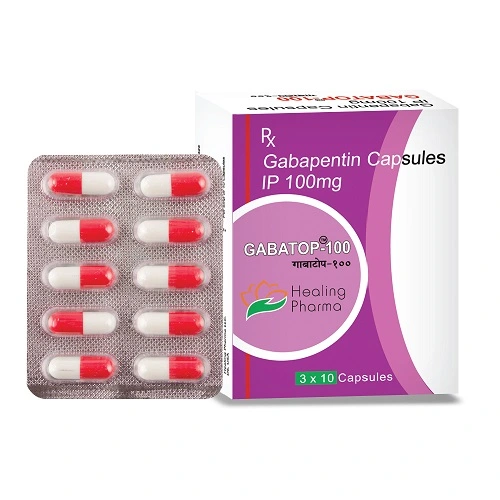







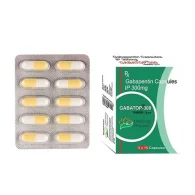







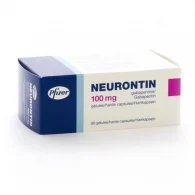
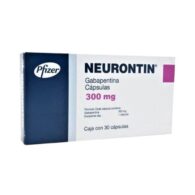
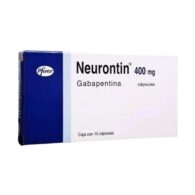



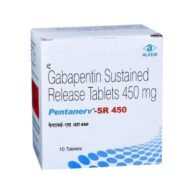
Reviews
There are no reviews yet.